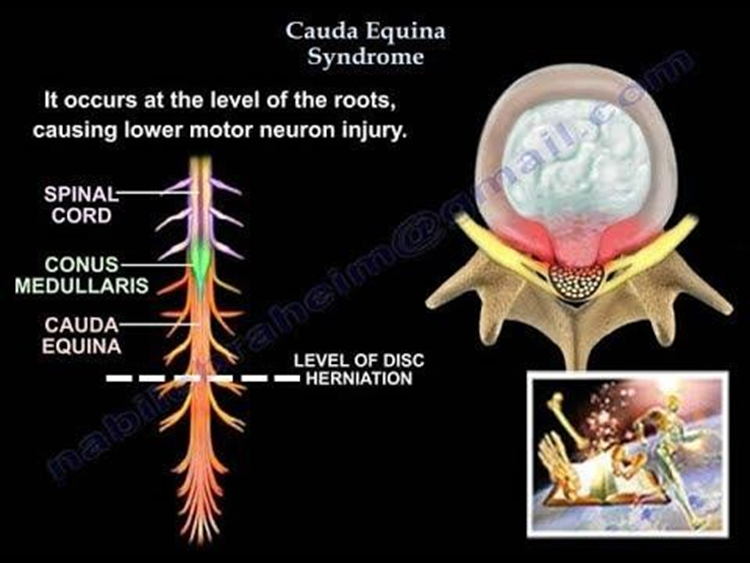Which action should the nurse include in the plan of care for a patient who has cauda equina syndrome related to spinal cord injury?
Catheterize the patient every 3 to 4 hours.
Administer medications to reduce bladder spasm.
Assist the patient to ambulate 4 times daily.
Stabilize the neck when repositioning the patient.
The Correct Answer is B
A. Catheterize the patient every 3 to 4 hours: Catheterization may be necessary for urinary retention, which is common in cauda equina syndrome, but it should not be done routinely every 3 to 4 hours. Indwelling catheters increase the risk of urinary tract infections and should be avoided unless necessary.
B. Administer medications to reduce bladder spasm: Bladder spasm is a common complication of cauda equina syndrome and can lead to urinary retention. Medications such as anticholinergics or alpha-adrenergic blockers may be prescribed to reduce bladder spasm and facilitate urine elimination.

C. Assist the patient to ambulate 4 times daily: Ambulation may not be appropriate for a patient with cauda equina syndrome, especially if they have significant motor or sensory deficits. Ambulation should be assessed on an individual basis and may require assistance or adaptive devices.
D. Stabilize the neck when repositioning the patient: Cauda equina syndrome affects the lower spinal cord and does not typically involve the cervical spine. Stabilizing the neck is important in patients with cervical spine injuries but is not directly related to cauda equina syndrome.
Nursing Test Bank
Naxlex Comprehensive Predictor Exams
Related Questions
Correct Answer is ["B","D"]
Explanation
A. Slurred speech is often an early sign of increased ICP due to focal brain injury affecting speech areas.
B. Bradycardia is a late sign of increased ICP and is part of Cushing's triad, which includes bradycardia, irregular respirations, and widened pulse pressure
C. Hypotension is not typically associated with increased ICP; in fact, hypertension may occur as the body attempts to maintain cerebral perfusion.
D. Nonreactive dilated pupils are a late sign of increased ICP, indicating potential compression of the third cranial nerve due to brain herniation.
E. Confusion can be an early or late sign of increased ICP, but it is not specific enough to be considered a definitive late sign without other context.
Correct Answer is A
Explanation
A. Turn the client's head to the side: This action helps prevent aspiration by allowing any oral secretions or vomitus to drain out of the mouth, reducing the risk of airway obstruction and aspiration pneumonia.
B. Loosen the clothing around the client's waist: While it's important to ensure the client's safety during a seizure, addressing airway protection takes precedence over loosening clothing. Loosening clothing can be done after ensuring airway patency.
C. Document the time the seizure began: Documenting the time of onset is important for accurately assessing the duration of the seizure, but it is not the first action to take during an active seizure.
D. Check the client's motor strength: Assessing motor strength is important for evaluating the
client's condition after the seizure has ended, but it is not the first action to take during an active seizure. Ensuring airway protection and preventing injury are the priorities during the seizure.
Whether you are a student looking to ace your exams or a practicing nurse seeking to enhance your expertise , our nursing education contents will empower you with the confidence and competence to make a difference in the lives of patients and become a respected leader in the healthcare field.
Visit Naxlex, invest in your future and unlock endless possibilities with our unparalleled nursing education contents today
Report Wrong Answer on the Current Question
Do you disagree with the answer? If yes, what is your expected answer? Explain.
Kindly be descriptive with the issue you are facing.
